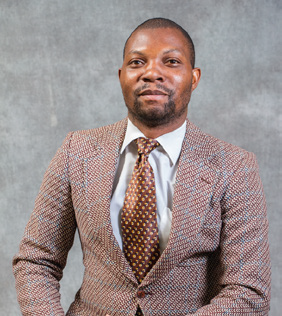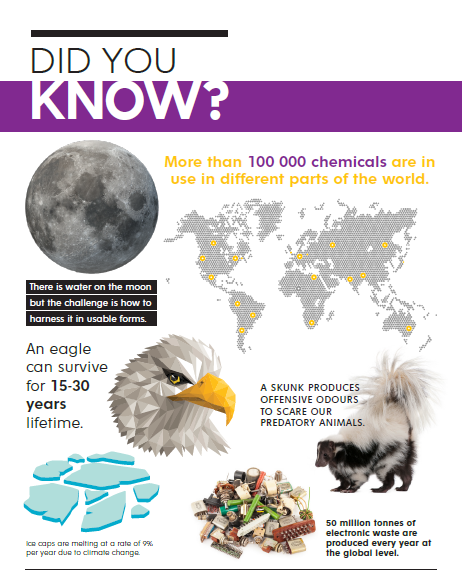Taking a breath of air is one of the first things that a new born baby does. As one grows up, breathing continues until the point of death. Breathing air is desirable only when the air is clean. The right to a clean and safe environment is a legal requirement espoused in the legislation of many countries including Zimbabwe. Section 73 of The Constitution of Zimbabwe recognises the fact that every citizen has a right to a clean and safe environment. Long before industrialisation and human civilisation, the quality of air was top notch. However, anthropogenic release of emissions, particulates and Volatile Organic Compounds (VOCs) has increased to a level affecting the ability of humans to enjoy the aesthetic environment.
Air pollution is caused by both natural and man-made sources. It is the man-made sources, also known as anthropogenic sources; which have caused untold suffering to humanity. Combustion of fossil fuels in vehicle engines, industrial processes, thermal power stations, construction and brick making processes are well known for generating both gaseous and particulate emissions.
Companies involved in manufacturing, mining, construction and other associated sectors have begun to realise that they cannot live in harmony with communities if they pollute the air. Combustion of fossil fuels, open burning of waste, veld fires and stone quarrying activities can generate air pollutants. These air pollutants vary in terms of type and quantity. Greenhouse gases such as Carbon Dioxide, Carbon Monoxide and Sulphur Dioxide continue to pose a threat to the environment and human health.
Deterioration of air quality is also seen through the rise of particulate matter including PM10 and PM2.5 which have aerodynamic diameter of 10 micrometres and 2.5 micrometres respectively. Both gases and particulates are on the rise in many industrial districts, mining towns and areas where combustion take place. A higher number of companies are becoming very conscious and installing technologies in order to prevent toxic impacts on the communities.
Apart from causing global warming, the release of gases into the environment causes acid rain, corrosion of buildings and health impacts such as asthmatic attacks. Communities are becoming more aware of their health and environmental rights to the extent of demanding environmental justice. The pressure from communities is also extending to crematoriums which may be undertaking cremation activities without pollution control measures. Crematoriums should install technologies that treat and detoxify toxic gases before they get into the environment. The existence of “smog” in urban areas of the world also threatens the health and well-being of urban dwellers.
Back in the 18th Century, the white-bodied peppered moth Biston betularia f. typica had to adapt and change itself through evolution in order to respond to harsh reality of the pollution intensive industrial revolution and it transformed itself towards the black bodied peppered moth Biston betularia f. carbonaria. Whilst this was possible for these month species at that time, human beings may not be able to evolve quickly to the changing air quality and therefore face the reality of health complications and death. Polluting the air we breathe is a paradox of our time because it is the destruction of the same air which gives us our livelihood. The irony of damaging the air which supports life functions, boggles the mind when trying to understand the cognition and motivation for such behaviour. Communities should be able to demand clean air in their environment and should be able to communicate with the companies if the air quality is deteriorating. When companies give a deaf ear to what the communities are proposing, it may be detrimental to their reputation. Leaders in the communities may end up petitioning government and regulators to take action. Media attention can also affect the prospects of a company to maintain a good reputation.
A wide array of technologies are available to curb the proliferation of air pollution. Some common technologies include electrostatic precipitators, fluidised beds, carbon capture and storage (CCS), atomised dust suppression, filter bags and use of clean energy sources such as solar energy. Preventing air pollution is much cheaper that treating it. The loss of human life cannot be quantified as this is a priceless scenario. In order to save communities from the harsh realities of polluted air, there is need to enforce environmental laws especially air emission limits. The commitments made in the Environmental Management Plans by project developers should be adhered to. Environmental Impact Assessments must have a very strong component that addresses mitigation of air pollution throughout all stages of the project cycle. Implementation of Environmental Management Systems (EMS) based on ISO 14001:2015 is a key solution to dealing with environmental aspects of air emissions and environmental impacts of air pollution. A “cat and mouse game” between communities and organisations which produce air emissions must end forthwith, in order to guarantee sustainable socio-economic development.

Author
-

Tawanda Collins Muzamwese is the Editor in Chief of the Green Business Gazette Magazine. He is is an international consultant in sustainable business development with massive experience in training, consulting and auditing. He has facilitated capacity development in more than 100 enterprises drawn from over 30 countries. He is the founder of the sustainability think-tank called Toxiconsol Consultancy t/a African Sustainability Consultants. He is the Editor in Chief of the Green Business Gazette Magazine. He is a consultant and business coach with over 13 years experience. Tawanda is a Management Systems Consultant working on promoting development and implementation of ISO Standards (ISO 14001:2015, ISO 9001:2015 and ISO 45001:2018) in both developed and developing countries. With his inspirational and pragmatic writing style he has written cutting edge books including: 1) How to grow a Side-hustle into a viable business - Overcome Salary Dependency 2) The Leading Consultant: How become an authority in your professional field 3) Step-by-Step Guide to implementing Safety, Health, Environment and Quality Management Systems 4) Stepping on Higher Perspectives: Greatness Tips Motivational Series 5) Sustainability Guidebook for Boards and CEOs: Leading from the front Tawanda writes about sustainability, motivation, safety, health, environment and quality management. His books are relevant to both developed and developing countries. With practical approaches and case studies, he provides incisive insights into entrepreneurship. His philosophy is based on the premise that every human being has potential to make a significant difference in their lifetime. He writes books on taking personal responsibility for progression in life. He motivates entrepreneurs to implement income generating projects and determine their own financial destiny. He also motivates companies to take up sustainability initiatives. A start-up coach, public speaker, environmentalist, safety, health and quality management expert, Muzamwese bridges the gap between theory and practice through building capacity and sharing practical case studies in his books.
View all posts



